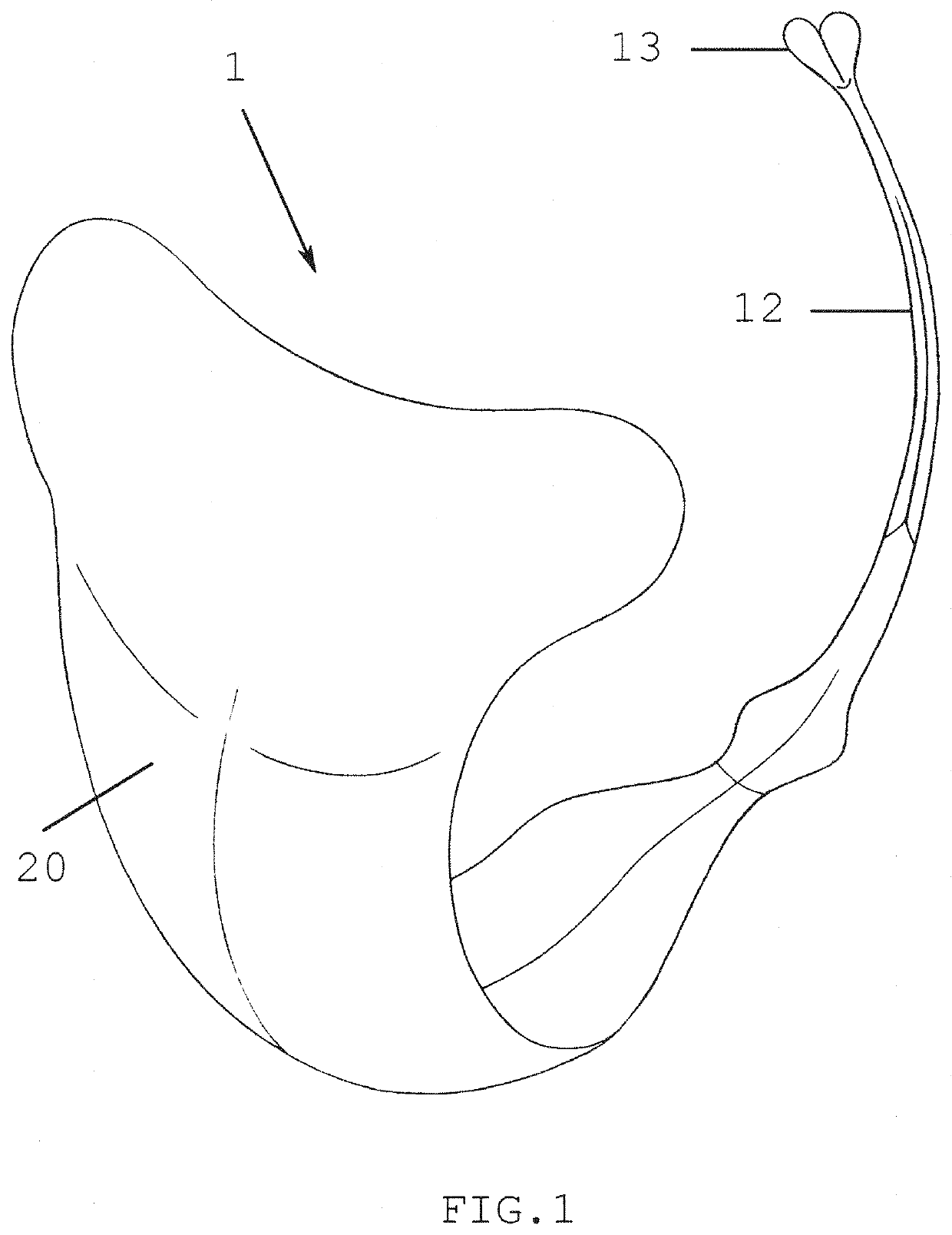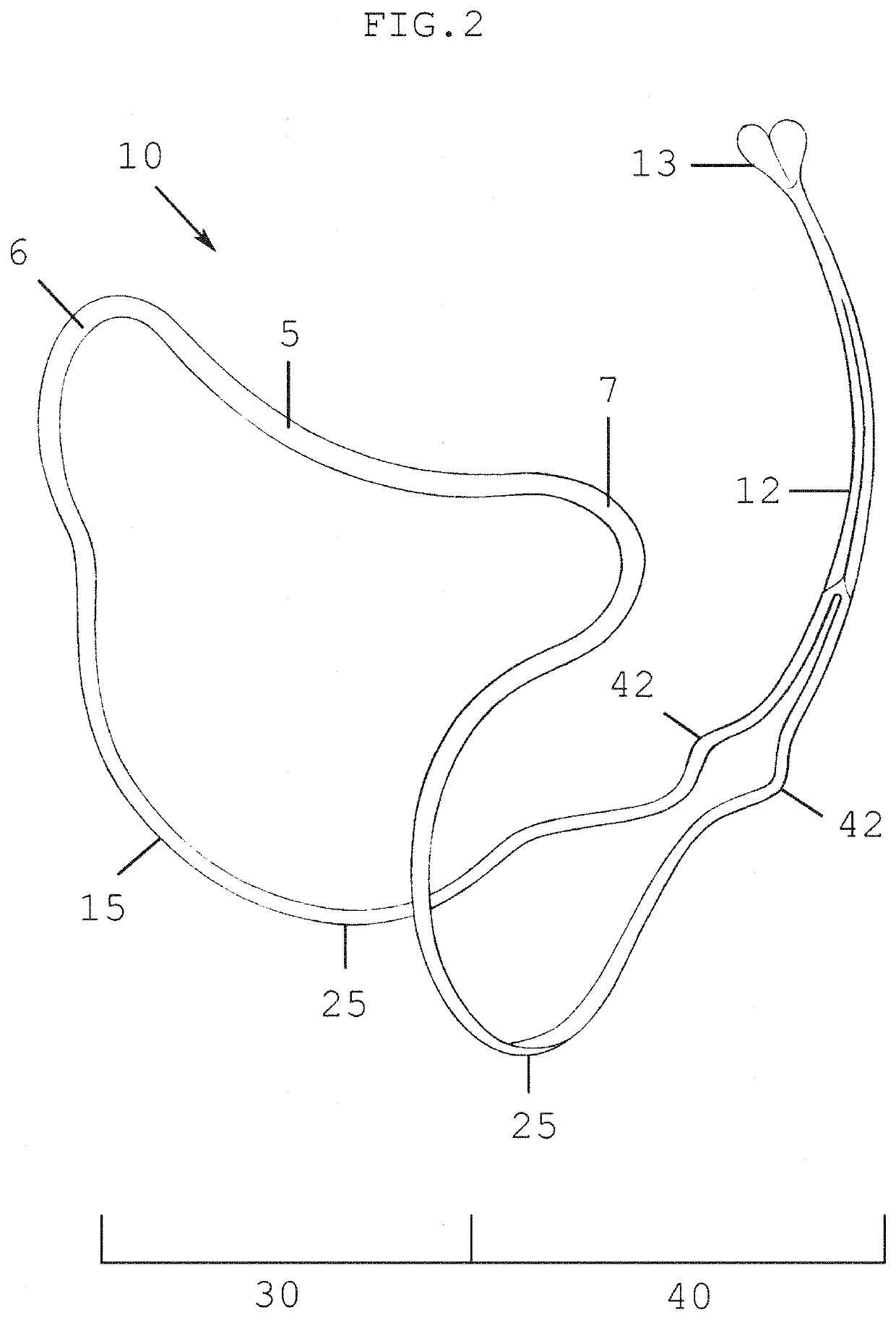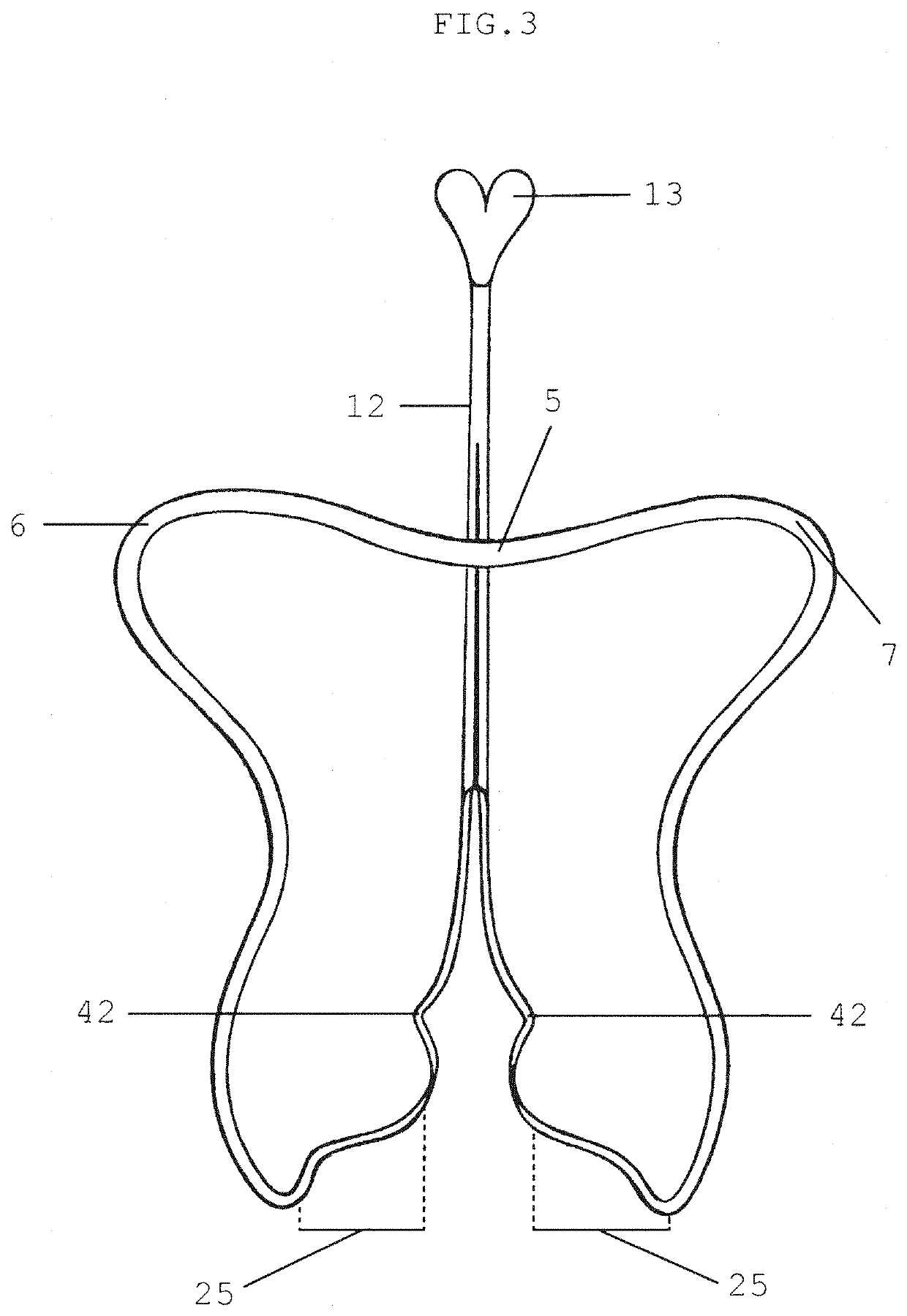A garment
a technology of g-string underwear and thongs, which is applied in the field of garments, can solve the problems of thong or g-string underwear that cannot meet the needs of modern-day women in the developed and developing world, and the solution is impractical for everyday use, and achieves the effect of preventing slipping
- Summary
- Abstract
- Description
- Claims
- Application Information
AI Technical Summary
Benefits of technology
Problems solved by technology
Method used
Image
Examples
Embodiment Construction
[0042]FIGS. 1 to 7 are schematic views of a first embodiment of an underwear, swimwear or sportswear garment 1 (hereinafter referred to as the underwear garment 1 for brevity) according to the invention, with FIG. 6 showing a schematic front view of a female skeletal system and body outline, with the outline of the underwear, sportswear and swimwear garment 1 superimposed thereon. The underwear, sportswear or swimwear garment 1 is a brief type garment i.e. it is designed to cover the mons-pubis region, genitals and anus of the wearer and is comprised of a structural frame 10, best seen in FIGS. 2 and 3 and a soft fabric covering 20, seen in FIGS. 1 and 4. The structural frame 10 consists of a single continuous piece of injection molded polycarbonate that is shaped into a contoured loop 15, the ends of which merge to form a posterior stem 12. The contoured loop 15 has a perimeter that is adapted to sit on the body of the wearer and to be covered by the soft fabric covering 20 to prov...
PUM
 Login to View More
Login to View More Abstract
Description
Claims
Application Information
 Login to View More
Login to View More - R&D
- Intellectual Property
- Life Sciences
- Materials
- Tech Scout
- Unparalleled Data Quality
- Higher Quality Content
- 60% Fewer Hallucinations
Browse by: Latest US Patents, China's latest patents, Technical Efficacy Thesaurus, Application Domain, Technology Topic, Popular Technical Reports.
© 2025 PatSnap. All rights reserved.Legal|Privacy policy|Modern Slavery Act Transparency Statement|Sitemap|About US| Contact US: help@patsnap.com



